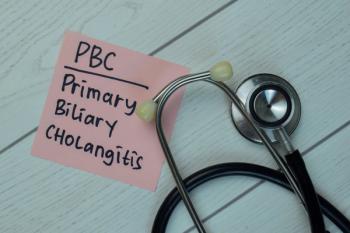
USPSTF guideline may remove financial barriers to routine HIV testing
Proposed HIV-testing guidelines by the U.S. Preventive Services Task Force (USPSTF) will remove financial barriers to routine HIV screening by eliminating out-of-pocket costs, according to a perspective article in the March 7 issue of the New England Journal of Medicine.
Proposed HIV-testing guidelines by the U.S. Preventive Services Task Force (USPSTF) will remove financial barriers to routine HIV screening by eliminating out-of-pocket costs, according to a perspective
The new USPSTF’s draft recommendations give an “A” grade to HIV testing in the general population for those individuals aged 15 to 65 years, regardless of risk. The previous USPSTF recommendation only gave an “A” grade to HIV testing among adults and adolescents at high risk and in high-prevalence regions.
The USPSTF assigns letter grades to each preventive service, based on the strength of the evidence related to the intervention's harms and benefits. There are 5 letter grades. The USPSTF recommends that services with an "A" or "B" grade be offered in clinical practice, because there is reasonable certainty that the net benefit is moderate to substantial. A "C" grade means that the USPSTF is not making a recommendation for or against the use of the service. A "D" grade is assigned when it is likely that the service has no net benefit or else the harms outweigh the benefits. The USPSTF discourages that services with a "D" grade be used in clinical practice. Finally, an "I statement" means that the current evidence is insufficient to fully evaluate the benefits and harms.
Authors Erika G. Martin, PhD, MPH, assistant professor of public administration and policy at University at Albany's Rockefeller College and fellow at the Rockefeller Institute of Government, Albany, New York, and Bruce R. Schackman, PhD, associate professor of public health and chief of the Division of Health Policy at Weill Cornell Medical College, New York, addressed the broad impact the changes will have on the healthcare of HIV-infected patients.
The perspective article, "Updating the HIV-Testing Guidelines - A Modest Change with Major Consequences," argues that changes to proposed guidelines-including assigning a grade “A” recommendation to screening for HIV in the general population 15 to 65 years of age-will have significant implications for the way HIV testing is financed, largely due to the implementation of the Affordable Care Act. If the grade “A” recommendation is adopted, most individuals of this age who have public or private health insurance coverage will be able to receive an HIV test without any out-of-pocket cost.
The USPSTF performs systematic literature reviews of published studies, including both randomized control trials and observational studies. The USPSTF did a large review in 2005. Its most recent study, published last year in the Annals of Internal Medicine, focused on research gaps from the last review.
“In particular, it considered new evidence that it is clinically effective to start antiretroviral therapy treatment earlier, and that taking antiretroviral therapy can dramatically reduce the transmission of HIV,” said D. Schackman told Formulary. .
“As part of the Affordable Care Act, private insurance and Medicare plans are already required to offer all preventive services with an ‘A’ or ‘B’ recommendation without requiring out-of-pocket costs from patients,” he continued. “Starting this year, there will be additional incentives for state Medicaid programs to offer these preventive services to clients without out-of-pocket costs. That means that if the draft recommendations are adopted, all Americans with public or private insurance should be able to get an HIV test without paying for it.”
Drs Schackman and Martin pointed out that testing costs are only the tip of the iceberg. “We previously estimated that it would cost $2.7 billion over 5 years to double the frequency of HIV testing at the national level,” Dr Schackman said. “Four-fifths of these costs are due to downstream treatment costs, rather than the cost of HIV testing. Expanded HIV testing is a really good investment, as it is important to identify people earlier in their infection so they can be treated sooner. That can in turn reduce the number of new infections.”
However, he said that payers need to be prepared to pay for treatment costs, which can be more than $20,000 per year.
“In theory, the coverage expansions under healthcare reform should alleviate our concern about the financing of this treatment. Many HIV-infected patients will gain comprehensive health insurance coverage through public or private payers, which will improve access to treatment. Yet healthcare reform will not fix all gaps in healthcare delivery, and key financial and capacity challenges remain for HIV treatment,” Dr Schackman said.
The rationale for a grade “A” recommendation from the USPSTF is that there is “high certainty that the net benefit is substantial,” he concluded. “In the case of HIV screening, that benefit can be achieved only if people identified as HIV-infected are effectively linked to and retained in HIV care and are supported in adhering to an effective antiretroviral regimen.”
Newsletter
Get the latest industry news, event updates, and more from Managed healthcare Executive.

















































